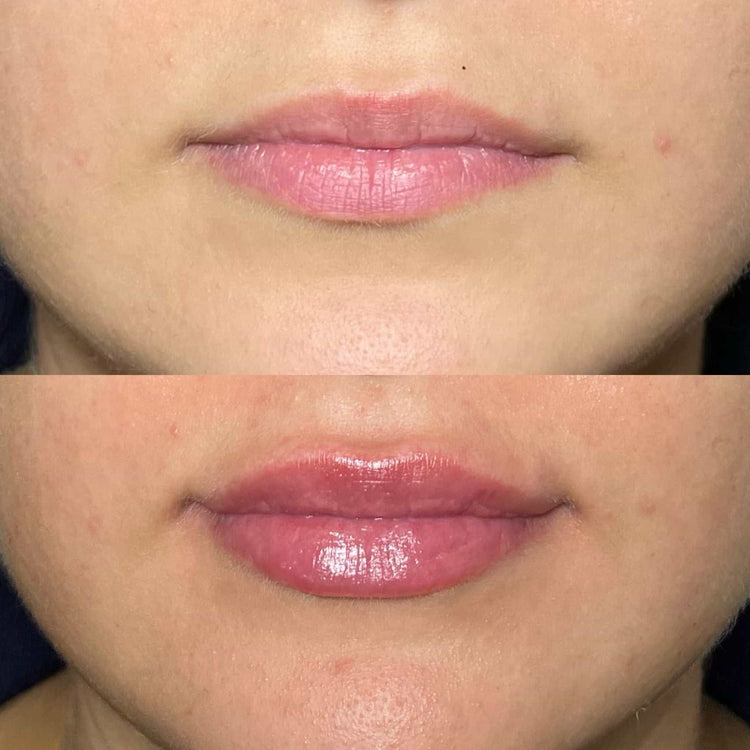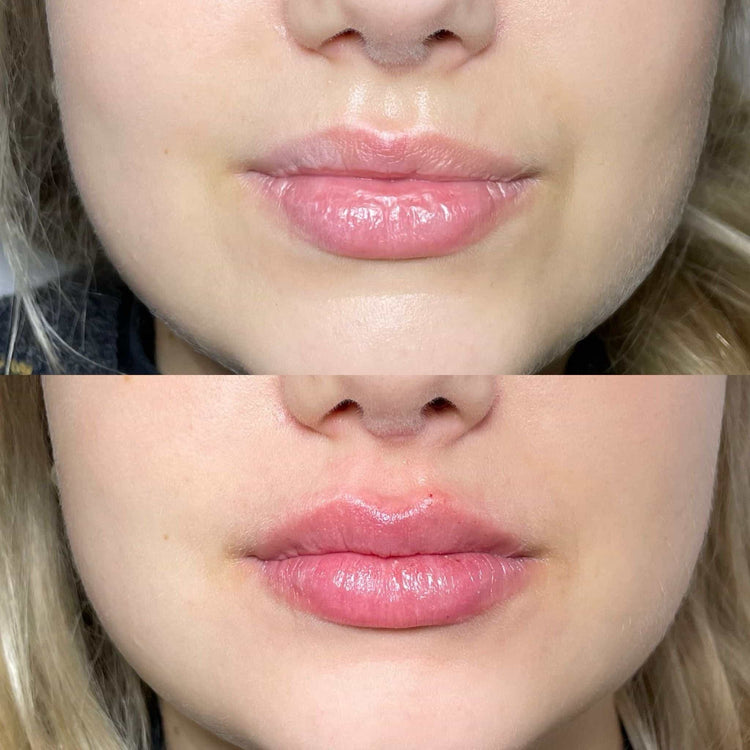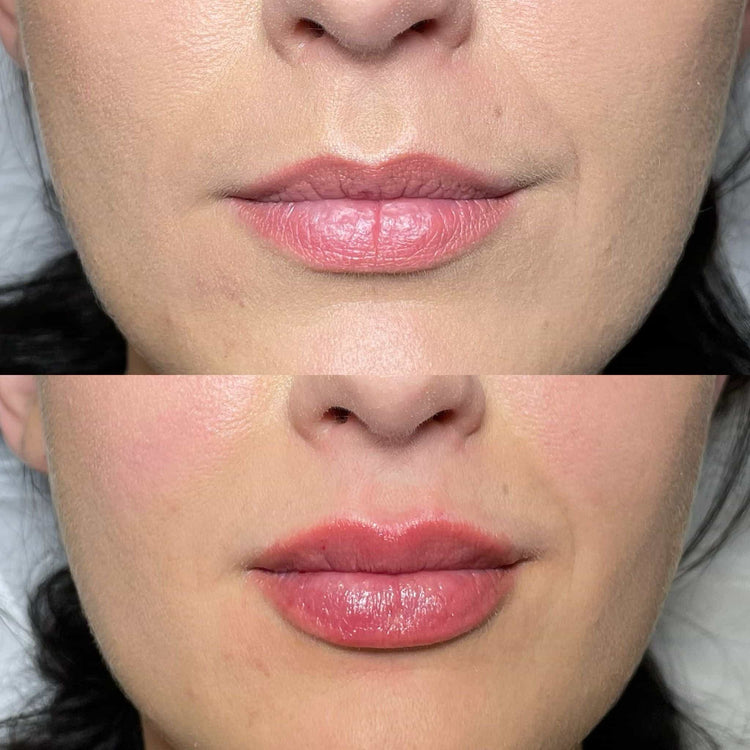Potential Complications
While lip injections can enhance appearance and boost confidence, it’s crucial to understand the potential complications associated with this procedure.
Infection
Infection is a serious potential complication of lip injections. Introducing any foreign substance into the body carries a risk of infection. This risk is increased if proper sterilization techniques are not followed during the procedure or if the injected material itself is contaminated. Signs of infection include redness, swelling, pain, warmth, and pus.
Allergic Reactions
Allergic reactions are another potential complication of lip injections. This can range from mild symptoms like itching, redness, and swelling to severe, life-threatening reactions. Reactions are most common to the local anesthetic used during the procedure. Individuals with a known allergy to certain medications or substances should inform their practitioner before undergoing lip injections.
Asymmetry
Asymmetry is another potential risk to consider. Injecting too much filler on one side of the lips or injecting it at different depths can lead to an uneven appearance.
It’s important to choose a qualified and experienced practitioner who understands facial anatomy and injection techniques to minimize the risk of asymmetry.
Lumps and Bumps

Other potential complications include lumps and bumps, which can occur if filler is not evenly distributed or if it migrates from its intended location.
- Lumps and bumps may feel hard or tender to the touch.
- They often appear soon after the injection but may resolve on their own over time.
- In some cases, additional treatment may be required to break up or dissolve the lumps.
Bruising and Swelling
Bruising and swelling are common side effects of lip injections. They typically appear within a few hours after the procedure and peak in severity 24-48 hours later.
Most bruising and swelling subside within a week or two, but it can take longer for some individuals.
Nerve Damage
Nerve damage is a potential complication of lip injections, although it’s relatively rare. Filler can sometimes compress or damage nerves in the area, leading to numbness, tingling, or pain.
This is more likely to occur if filler is injected too superficially or close to nerves. In most cases, nerve damage is temporary and resolves on its own within a few weeks or months.
However, some individuals may experience persistent nerve damage that requires further medical attention.
Long-Term Risks
While lip injections can offer aesthetic enhancements, it’s essential to be aware of the potential long-term risks involved. These complications can range from mild side effects like bruising and swelling to more serious issues such as infection, allergic reactions, and nerve damage. Understanding these risks is crucial for making informed decisions about cosmetic procedures.
Overcorrection and Unnatural Appearance
Long-term risks associated with lip injections include unnatural appearance and overcorrection. Repeated injections can lead to a stiff or “duck lip” effect, where the lips appear disproportionate or unnatural in shape.
Overcorrection, which involves injecting too much filler, can also result in an exaggerated and unrealistic appearance. Additionally, the body’s natural collagen production may decrease over time, requiring more frequent injections to maintain the desired results. This can contribute to a cycle of dependence on lip fillers and potentially lead to further complications.
Permanent Scarring
Long-term risks associated with lip injections include unnatural appearance and overcorrection. Repeated injections can lead to a stiff or “duck lip” effect, where the lips appear disproportionate or unnatural in shape.
Overcorrection, which involves injecting too much filler, can also result in an exaggerated and unrealistic appearance. Additionally, the body’s natural collagen production may decrease over time, requiring more frequent injections to maintain the desired results. This can contribute to a cycle of dependence on lip fillers and potentially lead to further complications.
Migration of Filler Material
Long-term risks associated with lip injections include unnatural appearance and overcorrection. Repeated injections can lead to a stiff or “duck lip” effect, where the lips appear disproportionate or unnatural in shape.
Overcorrection, which involves injecting too much filler, can also result in an exaggerated and unrealistic appearance. Additionally, the body’s natural collagen production may decrease over time, requiring more frequent injections to maintain the desired results. This can contribute to a cycle of dependence on lip fillers and potentially lead to further complications.
Choosing a Practitioner
Choosing a qualified practitioner is crucial when considering lip injections.
Qualifications and Experience
Choosing a qualified practitioner is crucial when considering lip injections. Look for a practitioner who is licensed, experienced in cosmetic procedures, and has specialized training in lip augmentation techniques.
Inquire about the practitioner’s qualifications, experience, and track record of successful lip injection procedures. It’s also important to review before-and-after photos of previous patients to assess their aesthetic skills and understand their style.
Don’t hesitate to ask questions about their training, sterilization protocols, and the types of fillers they use. A reputable practitioner will be transparent about their procedures and willing to address any concerns you may have.
Reputation and Reviews
Choosing a qualified practitioner is crucial when considering lip injections. Look for a practitioner who is licensed, experienced in cosmetic procedures, and has specialized training in lip augmentation techniques.
Inquire about the practitioner’s qualifications, experience, and track record of successful lip injection procedures. It’s also important to review before-and-after photos of previous patients to assess their aesthetic skills and understand their style.
Don’t hesitate to ask questions about their training, sterilization protocols, and the types of fillers they use. A reputable practitioner will be transparent about their procedures and willing to address any concerns you may have.
Online reviews can provide valuable insights into the experiences of other patients. Look for platforms like Google Reviews, Yelp, or specialized cosmetic surgery review websites.

Pay attention to both positive and negative reviews, and look for patterns in the feedback. Consider the overall sentiment and the specific details shared by reviewers. While individual experiences can vary, consistent positive reviews from multiple sources can be a good indicator of a reputable practitioner.
Consultation Process
Choosing a qualified practitioner is crucial when considering lip injections.
Look for a practitioner who is licensed, experienced in cosmetic procedures, and has specialized training in lip augmentation techniques.

Inquire about the practitioner’s qualifications, experience, and track record of successful lip injection procedures.
It’s also important to review before-and-after photos of previous patients to assess their aesthetic skills and understand their style.
Don’t hesitate to ask questions about their training, sterilization protocols, and the types of fillers they use. A reputable practitioner will be transparent about their procedures and willing to address any concerns you may have.
Get fuller lips in no time with Dr. Laura Geige’s lip injections at It’s Me & You Clinic
- Cosmelan Depigmentation Peel Near Walton On The Hill, Surrey - June 25, 2025
- Cosmelan Depigmentation Peel Near Englefield Green, Surrey - June 24, 2025
- What Is The Ideal Skin Type For Cosmelan Depigmentation Peel In The UK - June 24, 2025
